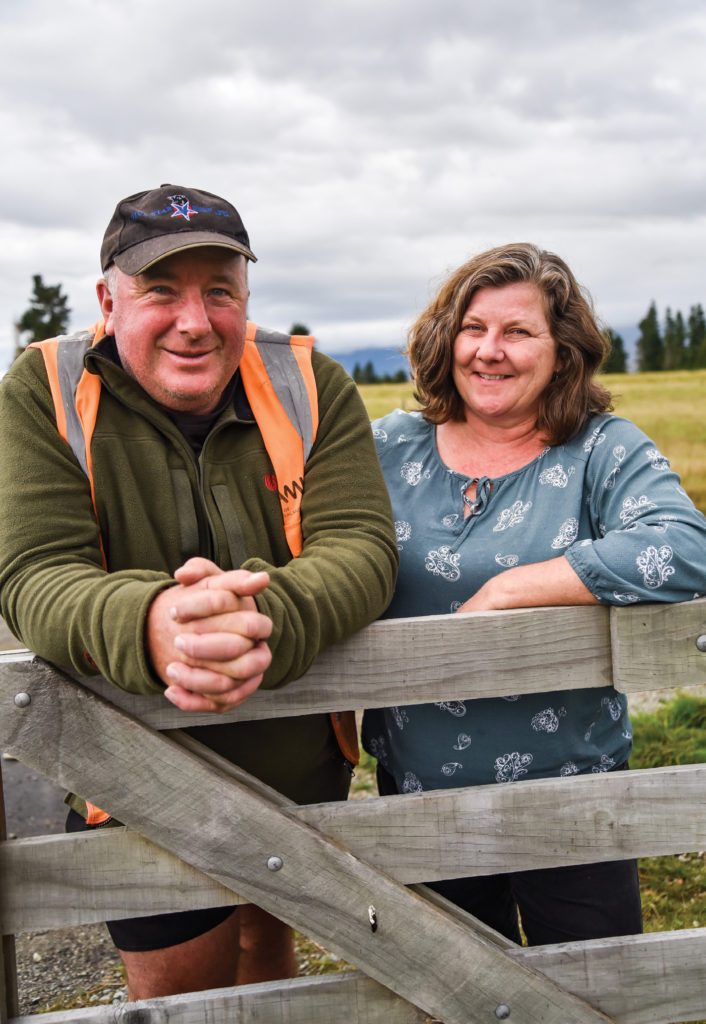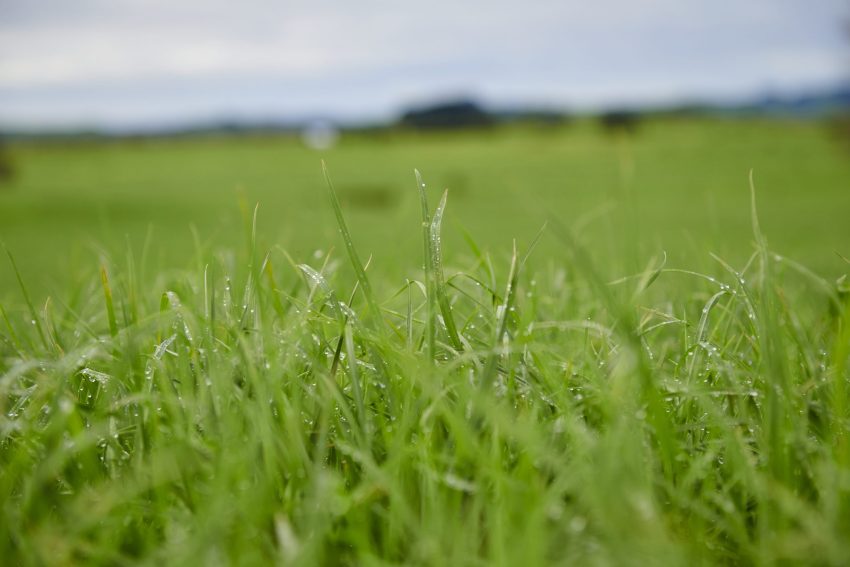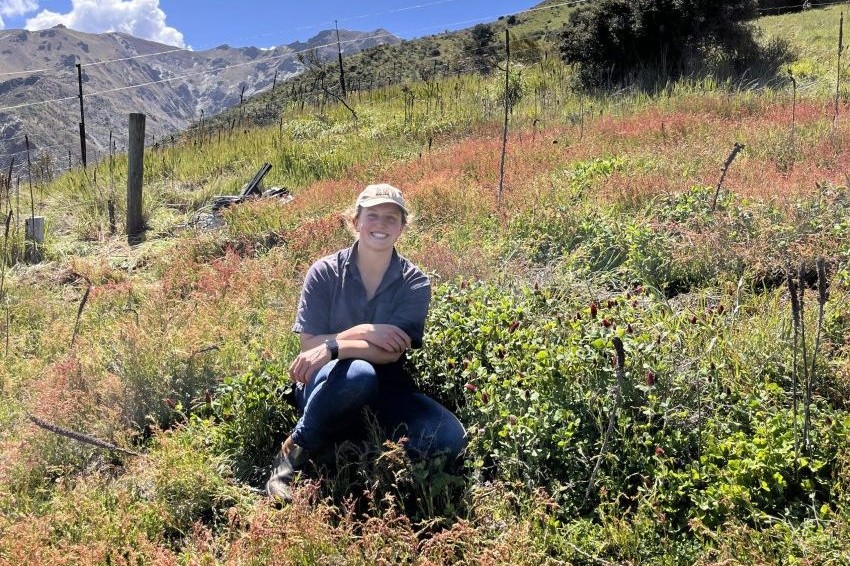Long grass farming a winner
The use of fescue with clovers has transformed a Southland farm bordering Fiordland, Terry Brosnahan writes. Photos: Chris Sullivan.

The use of fescue with clovers has transformed a Southland farm bordering Fiordland, Terry Brosnahan writes. Photos: Chris Sullivan.
A Southland farm using no feed crops is killing an average of 72% of lambs from the weaning draft at 18kg carcaseweight.
Eight years ago 140 hectares of feed crops were grown on Kepler Farm. For the past two winters there have been no feed crops, just all grass using fescue, clovers and ryegrass. Fescue is grown on 50% of the effective area.
Kepler station manager Travis Leslie calls it long-grass farming.
“We run higher covers than most and leave higher residuals.”
A key in the operation is fescue. It has a deep root system and is sown with white and red clover. Together they give a lot more growth. It starts two weeks early in spring and carries on two weeks later in autumn at full production. In a good year it gives reasonable growth over the winter.
The Pamu (the brand name for Landcorp farming) farm, near Manapouri is 1650ha (1500ha effective) with 90% of it flat and the rest rolling hills. About 750ha are in fescue, the rest in ryegrass.
The stock ratios have also changed from 85% sheep and 15% cattle to 50:50.
Travis has 20 years experience of growing fescue in the North and South Islands. He started planting it when he took over as manager nine years ago. It was a store farming operation but now breeding, finishing and trading.

“The trading gives great flexibility.”
Tall fescue was originally sown to combat grass grub, but he knew it could do more.
As the fescue is coarse the metabolisable energy (ME) can vary, but he knew it is a good companion plant with clovers.
“When it is in full swing it is very good feed, as good as ME as you can get.”
But it has to be rotationally grazed.
“Set-stocking is the death of any paddock.”
With the fescue able to withstand grass grub, greater longevity means the paddocks won’t need to be replaced so soon.
Another bonus with the long grass farming may be greater longevity in the ewes so fewer replacements will be needed. With no feed crops the sheep are not wearing their teeth out on bulbs and soil.
Springs are hard on Kepler as they can come later, then it can be dry after Christmas to autumn. So it is a relief to have the lambs off the station.
Ewe lambs, hoggets are bought in from other local Pamu farms in March/April.
Lambs left entire
Travis can’t give a tailing percentage because they haven’t tailed for three years and the lambs are left entire.
So the lambing percentage is based on weaning numbers, about 150%.
“When we wean only about 1% of the lambs have dags.”
The 1200-1400 lambs not killed are sold store at about 32kg.
The ewes are not drenched except light ones which are marked and stay for one more season.
The five-year average lambing is 150% to the ram and they don’t have to flush ewes.
“We work on the ewes 12 months of the year to get that result.”
Travis says the long grass system suited cattle and when break-fed, they got good results. Now they have started using it on the sheep.
Annual rainfall is more than 1000mm, well over in a wet year given Fiordland is on the boundary, but the station is on a glacial moraine and can dry out within two weeks.
“If we are in Fiordland it is very wet, but in Southland, it’s very dry.
From Christmas through to the autumn it can be dry.
“It is nice to take the lambs off and be done.”
A positive of the moraine is the farm can handle heavy cattle which don’t pug the ground.
Originally they used Eastern, a tall fescue variety which grows a coarser feed and allowed a lot more clover to grow than ryegrass.
Travis says it is no longer available so Hummer is used but it is finer-leafed.
“The sheep nail it because it is so palatable.”
If the fescue takes off, surplus growth is easily managed because of the stock numbers especially with cattle.
“The only time we use a topper is for thistles.”
He buys all the seed off PGG Wrightson. Country-Wide understands Landcorp does supplier contracts for its farms.
Kepler runs 15,000 stock units made up of 4500 ewes (1200 stud ewes) plus replacements which are bought in from other Pamu farms. There are 450 cows though the number is moving to 600 (the station is part of the Beef + Lamb NZ beef genetics programme) and 1200 trading cattle.
Travis is married to Catriona Cunningham, an artist and art tutor. They have two children, Robbie, 15 and Ellen, 14. There are five staff on the station plus Bella Taylor, a farm technician. Kepler has a sheep stud so Bella does a lot of recording and farm work. She is shared with other Pamu farms with studs.
Bella will be doing a lot more now Kepler is part of the beef genetics programme.
Fescue has longevity
The oldest paddocks are nine years old and don’t look like they need replacing.
The dilemma now is: do they continue putting in more fescues and change the farming operation or stick with ryegrass on the rolling country.
Another option is to take fescue paddocks after 10 years and set stock them with ewes for three or four years then replace them.
Travis is not sure what to do because the fescue looks like it might last 15 years.
“We’ve just reached those crossroads now.”
Even with some reversion, at 60% cover fescue will outperform ryegrass in most situations.
Travis says fescue is slower to establish than ryegrass but once it is established it is bullet proof. Fescue sown in September is usually available for grazing at the end of January. They use a lot more potash fertiliser as it suits the clover. The fescue responds well to nitrogen. Based on Overseer, with no more cropping in the system Kepler has gone from leaching 38kg N/ha to 16kg N/ha.
Until two years ago the fescue was drilled in fine seedbeds. Now annual grass is direct-drilled into sprayed-off ryegrass paddocks and lasting two years.
This spring will be the first time the annual will be sprayed off and a fescue, clover mix direct-drilled in.
All supplements are either made on the farm or from a 100ha leased block.
Prior to set-stocking the ewes get a five-in-one, the two-tooths get a toxo and campy.
Weaning is the second week of January. A month before, the lambs get a scabby mouth scratch, a five-in-one jab and a drench.
Every three-years Travis does a drench resistance test with vets, a standard practice across all the state-owned farms. The ewes are shorn in New Year then go back to the hills and start putting on condition.
The only time the ewes come down to the fescue country is with lambs at foot.
Scanning is late July and triplet-bearing ewes are left in with the twins, the singles separated.
There is no early ewe lambing mob and the hoggets are not mated.
“The whole focus is on the main line achieving a top result.”
Once the ewes get to a good mating weight they hold them there.
Travis says in winter the ewes don’t lose weight but gain it. He aims for a peak lactation when they start to lamb. The ewes are set stocked at the start of September 1 for lambing about the 25th.
Rotated on fescue
Once all the ewes have lambed and lambs are mobile, half are moved to the fescue and rotated. This gives more room for the rest of the ewes in the ryegrass paddocks.
The ewes are kept in mobs of about 1000 and every Friday moved to fresh paddocks, a total of about 5ha every shift.
The covers are 3500kg drymatter/ha saved from mid-March. So about 60ha is shut up to feed through June/July and August.
“It is all about feeding.”
It is a totally different system, shutting up a fescue paddock in March to be grazed over the winter and available again with regrowth in September. With cropping, a feed crop is drilled in November, used over the winter, sown in ryegrass by Christmas.
Also the fescue paddocks do not get pugged in winter.
“In a dry year we can lose the crop anyway.”
It’s been a wet winter so Travis is glad to see spring come early at the beginning of September.
Kepler has gone back to six-month shearing because 12-month was knocking the ewes around before weaning. It’s more expensive but Travis is hoping to be rewarded with better animal health and welfare.
The change to fescue and long-grass farming has helped the staff welfare.
Travis says the winter programme wasn’t staff-friendly, seven days a week of break feeding. On weekends it was three staff members working a total of 30 hours. Now it is one-and-a-half hours a day for one worker.
Travis believes fescue would work on most farms with good management.
“Fescue gives you a month’s extra production over traditional ryegrass pastures.”
Even if the fescue had just solved the grass grub problem, he would have been happy, but it has transformed the farming operation.
“We knew we were on to a winner.”
KEY POINTS
- About 50% of ryegrass now fescue.
- Fescue gives extra month’s growth.
- No feed crops grown for two years.
- Average of 72% lambs killed at weaning.
- No tailing, lambs left entire, few dags.
- Major reduction in staff time over winter.
- Large drop in N leaching
FARM FACTS
- 15,000su on 1650ha (1500 effective) includes 4500 ewes (1200 stud ewes), replacements bought in.
- 450 cows moving to 600, and 1200 trading cattle.
- Five staff and a farm technician shared.





